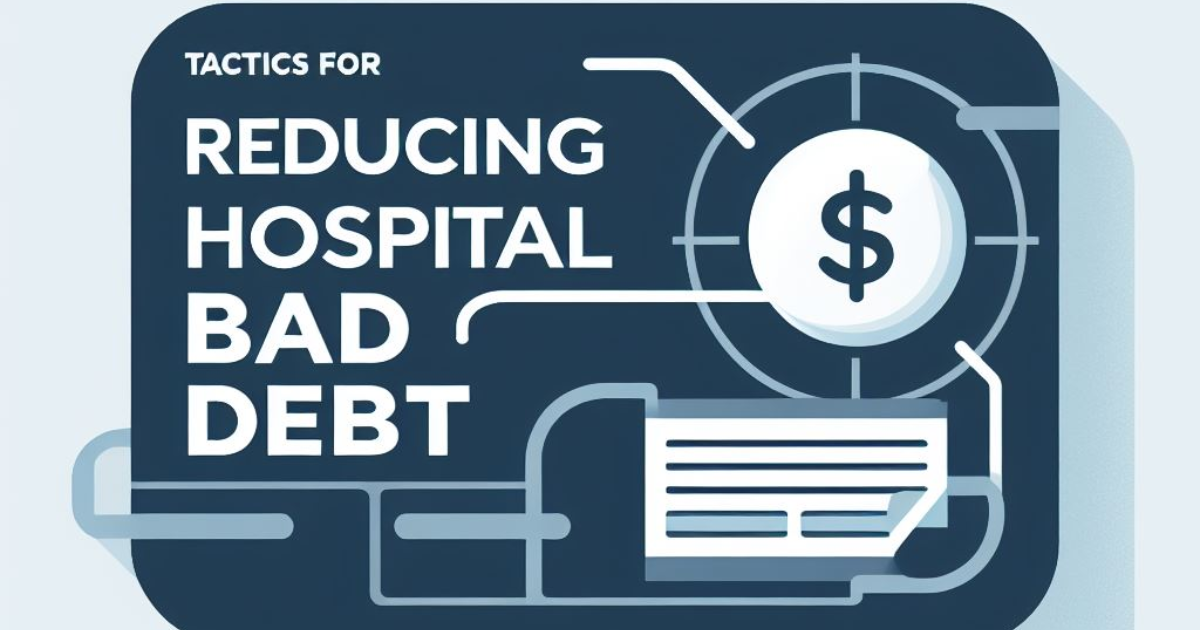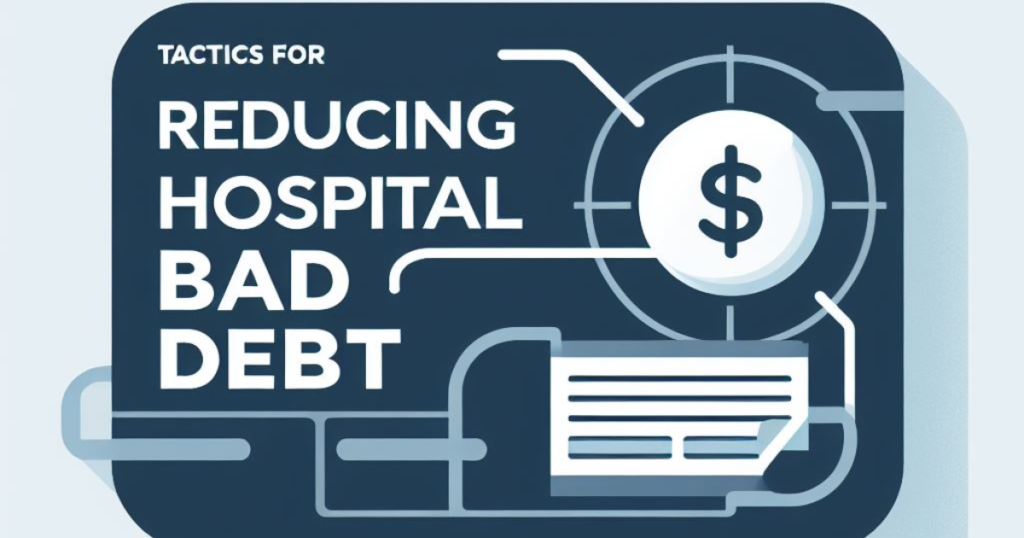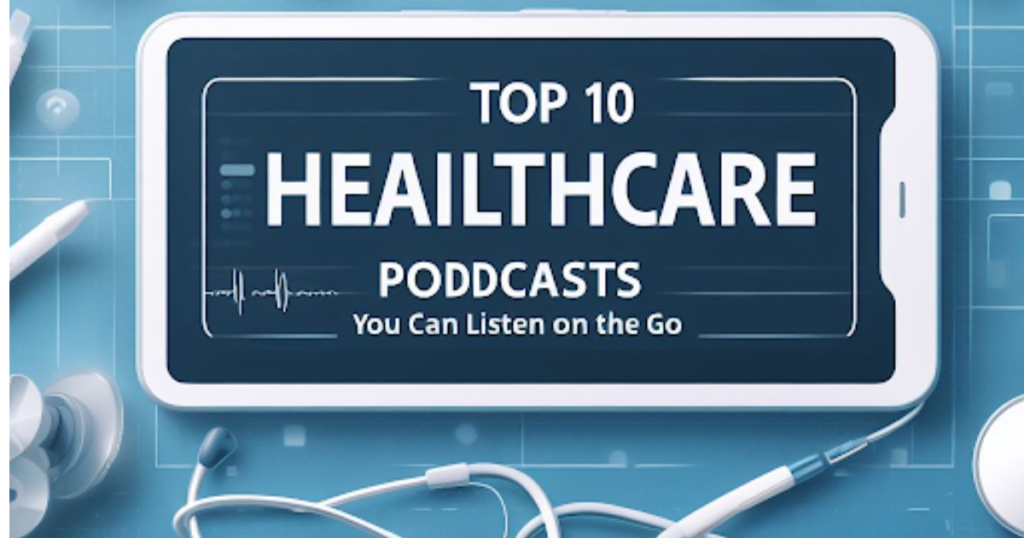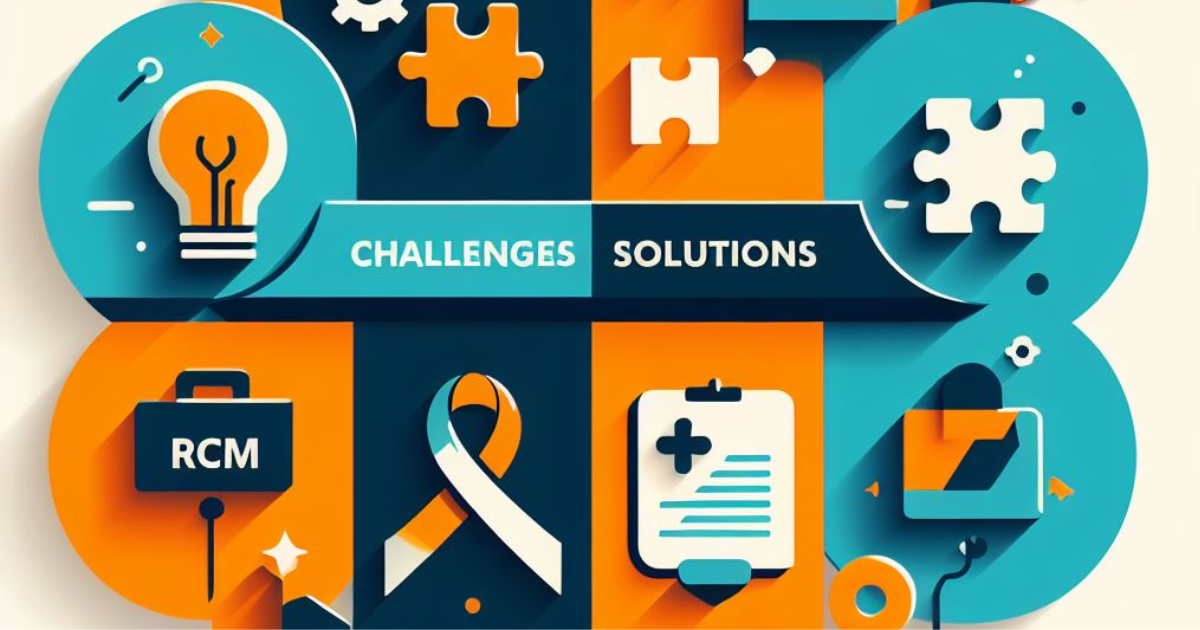
Hospital bad debt refers to the amount of money that a hospital is unable to collect from patients for the services provided. It occurs when patients are unable or unwilling to pay their medical bills, and the hospital is unable to obtain reimbursement for the care provided. This can happen when patients are uninsured, underinsured, or when they do not apply for financial assistance despite their inability to pay the bills. It can also occur in cases where patients file for bankruptcy, leading to the hospital being unable to recover the debts.
Reducing hospital bad debt is a critical aspect of revenue cycle management for healthcare providers. It requires a multi-faceted approach that combines effective strategies with a human touch. In this article, we will delve into the tactics mentioned earlier in detail to provide a comprehensive guide for hospitals looking to tackle this challenge.
- Improve Communication:
Effective communication with patients is crucial to building trust and ensuring they understand their financial responsibilities. Train staff members to communicate in a clear and empathetic manner. Provide them with the necessary tools and resources to explain the billing process, cost estimates, and insurance coverage. Foster an environment of open dialogue, where patients feel comfortable asking questions and seeking clarification regarding their bills.
- Patient Financial Counseling:
Offering patient financial counseling services can provide invaluable assistance to patients in navigating their insurance coverage and payment options. These counseling sessions can be conducted by trained staff members who can help patients understand their insurance plans, explore available resources, and apply for financial assistance programs. By offering this personalized support, hospitals can help patients make informed financial decisions and prevent bad debt.
- Verify Insurance Information:
Verifying insurance coverage and eligibility for each patient before their visit is crucial in identifying any discrepancies or issues that may result in denied claims or underpaid bills. Develop a systematic process for verifying insurance information and double-checking the accuracy of patient data. This will allow hospitals to address any issues beforehand and streamline the billing process.
- Collect Payments Upfront:
Implementing a proactive approach to payment collection can significantly reduce bad debt. Train staff members to collect co-pays, deductibles, and upfront payments before services are rendered. Create a welcoming environment where patients feel comfortable discussing their financial responsibilities and provide them with convenient payment options. Utilize automated payment systems or online portals to simplify the payment process and make it more convenient for patients.
- Implement Financial Assistance Programs:
Developing and promoting financial assistance programs is essential for providing support to uninsured or underinsured patients. Create a transparent process for evaluating patients’ financial situations, offering sliding fee scales based on income, and partnering with local organizations to maximize available resources. Ensure that information about these programs is readily available to patients and that staff members are trained to guide patients through the application process.
- Streamline Billing Processes:
Simplifying and streamlining the billing process is crucial for reducing errors and confusion. Audit the billing process to identify inefficiencies and areas for improvement. Ensure that accurate and timely claims are submitted to insurance providers, and establish a system for following up on outstanding claims. Proactively address denials or underpayments by identifying the root causes and taking necessary corrective actions.
- Technology Solutions:
Investing in revenue cycle management systems or software can significantly improve billing accuracy and efficiency. Look for solutions that automate tasks, provide real-time insights into financial performance, and streamline communication with patients. Implementing user-friendly online portals can enable patients to access their billing information, make payments, and communicate with hospital staff. Additionally, consider utilizing data analytics tools to track and analyze the effectiveness of your strategies.
- Education and Training:
Comprehensive education and training for staff members involved in the billing and collections process are essential. Ensure that staff members are up-to-date with changing regulations, billing codes, and insurance requirements. Provide ongoing education sessions or access to external resources to enhance their knowledge. Encourage a culture of continuous learning and improvement within the organization.
- Utilize Data Analytics:
Leverage the power of data analytics to identify trends, patterns, and potential areas for improvement. Monitor denial rates, average collection periods, and reimbursement rates to gather insights. Analyze this information to make informed decisions and prioritize efforts to optimize revenue cycle management. Regularly review and update key performance indicators to track progress and identify areas in need of attention.
- Collaborate with Payers:
Building strong relationships with insurance companies is essential in navigating the complex billing landscape. Regularly communicate with payers to better understand their policies, negotiate contracts, and address any billing or reimbursement issues promptly. Collaborate with them to develop mutually beneficial strategies that align the goals of both parties. By fostering open and productive relationships, hospitals can reduce disputes and improve payment processes.
In conclusion, reducing hospital bad debt requires a comprehensive approach that combines effective strategies with a human touch. By improving communication, offering patient financial counseling, verifying insurance information, collecting payments upfront, implementing financial assistance programs, streamlining billing processes, investing in technology solutions, providing education and training, utilizing data analytics, and collaborating with payers, hospitals can significantly reduce bad debt and improve their financial outcomes while providing quality care to patients. Remember that each tactic must be implemented with empathy and a focus on patient satisfaction to achieve the best results.





